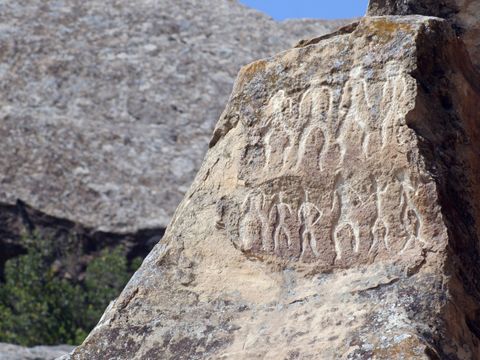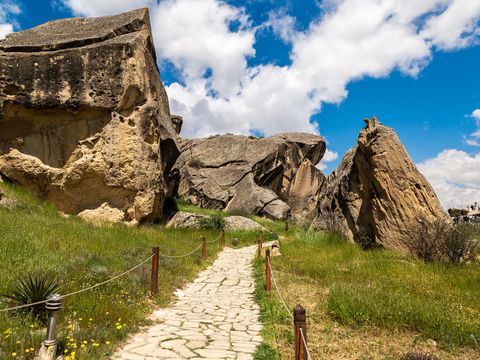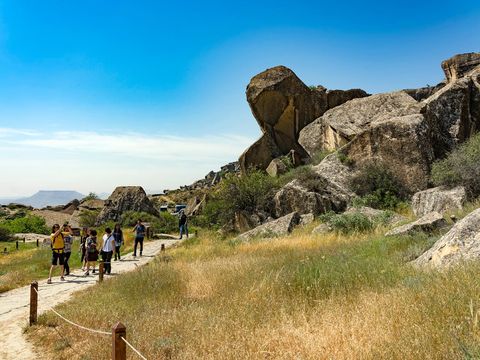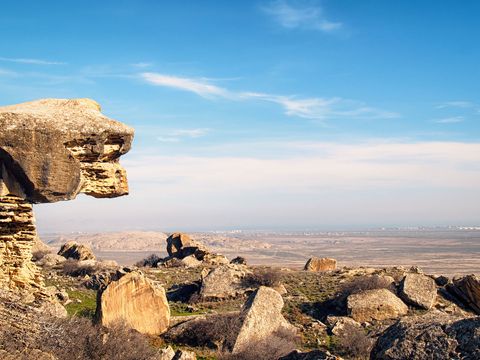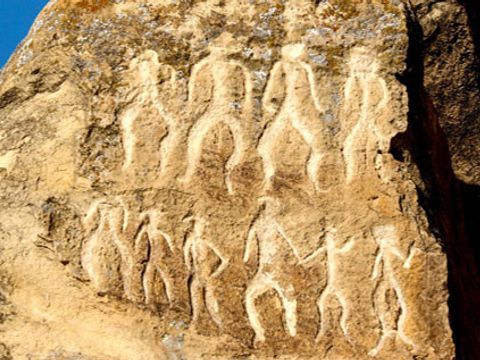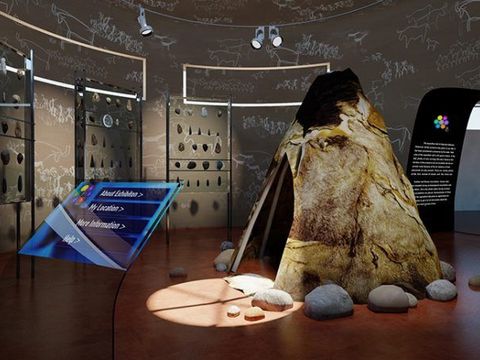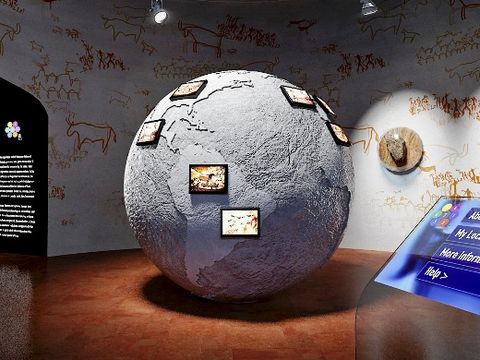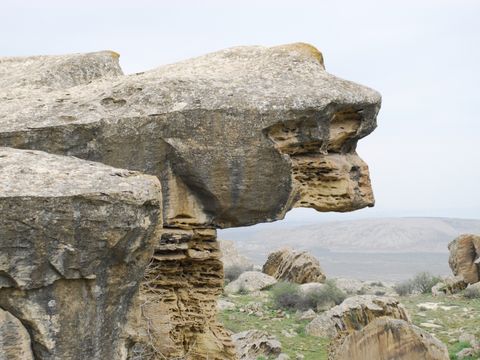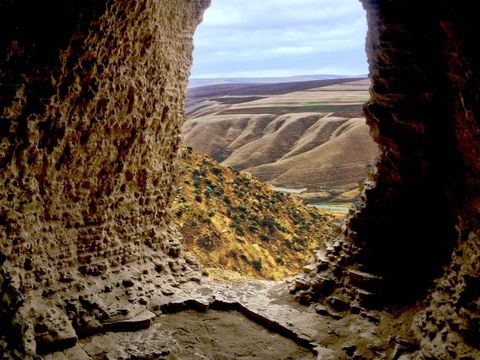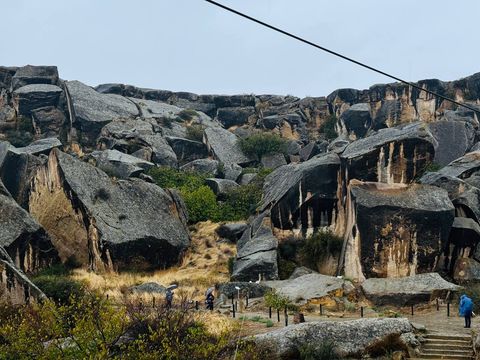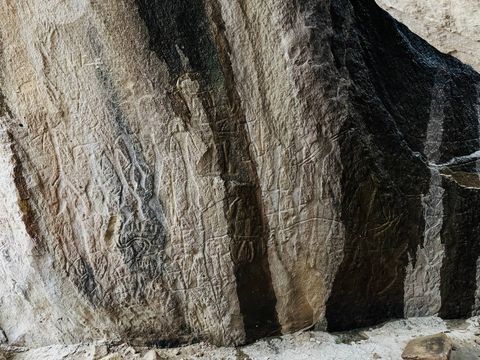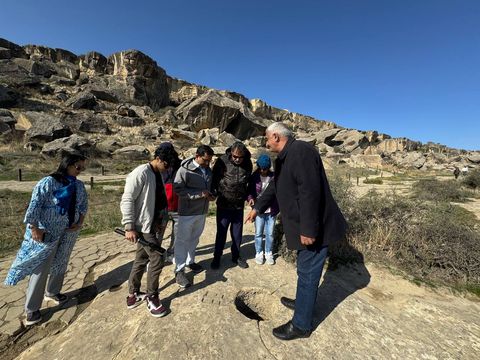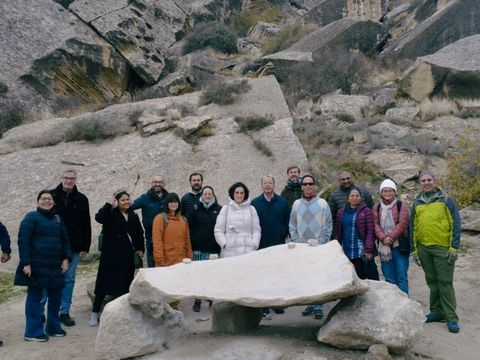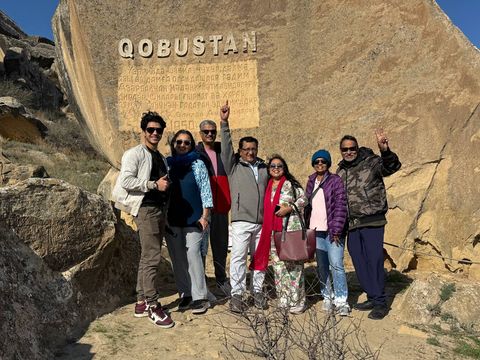Frequently Asked Questions about Gobustan National Park
What is the Gobustan Rock Art Cultural Landscape, and why is it significant?
The Gobustan Rock Art Cultural Landscape, a UNESCO World Heritage Site, is renowned for its ancient rock engravings and petroglyphs, providing invaluable insights into prehistoric human life in Azerbaijan.
How old are the rock engravings at Gobustan, and what do they depict?
The rock engravings at Gobustan date back to the Upper Paleolithic period, with depictions of animals, scenes of daily life, and symbolic motifs offering a glimpse into the cultural and artistic practices of ancient societies.
What is the best way to reach Gobustan from Baku?
Gobustan is approximately 64 kilometers southwest of Baku. You can reach it by car or take a guided tour from Baku, which is a convenient and popular option for visitors.
Are guided tours available at Gobustan, and are they recommended?
Yes, guided tours are available at Gobustan, and they are highly recommended for a more in-depth understanding of the rock engravings, archaeological sites, and the cultural history of the area.
Is there an entrance fee to visit the Gobustan Rock Art Cultural Landscape?
Yes, Gobustan National Park: 10 AZN
Can visitors take photographs at Gobustan, and are there any restrictions?
Photography is generally allowed at Gobustan. However, some restrictions may apply in specific areas to ensure the preservation of the rock art. Always check with staff or posted signs for guidelines.
What is the best time of year to visit Gobustan?
The best time to visit Gobustan is during the spring and autumn months (April to June and September to November) when the weather is mild, and outdoor exploration is comfortable.
Are there facilities such as restrooms and visitor centers at Gobustan?
Yes, Gobustan has facilities such as restrooms and a visitor center, providing information about the site's history, significance, and the conservation efforts in place.
Are there walking trails or paths at Gobustan for visitors to explore?
Yes, Gobustan has designated walking paths and trails that guide visitors through the rock art sites, ensuring a safe and informative exploration of the cultural landscape.
Can I combine a visit to Gobustan with other nearby attractions?
Yes, Gobustan is often included in tours that visit nearby attractions such as the Mud Volcanoes and the Bibi-Heybat Mosque. Combining these destinations offers a comprehensive experience of the region's natural and cultural highlights.
